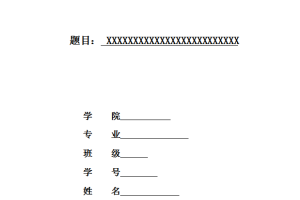摘 要
近年来随着德国工业4.0的概念推出,中国也相应的推出了中国制造2025的指导政策,试图促进制造业的转型升级。机械行业是国家制造业的重点产业之一,行业的发展与国民经济现代化发展和基础设施水平息息相关。目前国内经济增速放缓,加之房地产行业的影响,市场连续几年来的持续下滑,给整个行业生态带来了巨大的挑战。
2016年中国机械行业仍在低谷徘徊,制造商承受着巨大的市场压力,机械制造企业在此种背景下迫切需要降低成本,增强竞争力。物流行业是企业的第三利润源泉,对企业的影响巨大。在这一环境下,库存控制作为物流的重要组成部分,对企业提高资金的周转率,改进生产管理,提高企业核心竞争力都有极大影响。
本文将H机械公司的库存问题作为研究对象,以物流管理的专业知识为基础,从库存控制的基本概念和理论着手,首先对国内外机械制造业库存控制研究现状进行总结,分析了库存控制的策略、库存控制方法及其模型,在需求预测方面采用定性和定量的方法,包括时间序列法、ABC分析法等。最后根据H机械公司的实际情况,对其生产状态和零部件库存状况进行分析,运用ABC分类法对零部件管理进行优化,并具体对公司管理模式、采购模式和库存模式等内容提出改善方案,提高其库存周转率,降低库存成本,使企业受益。
关键词:物流 机械部件 库存控制
ABSTRACT
In recent years, with the introduction of German industry 4.0, China is also raising the Chinese manufacturing 2025 guidance policy, trying to promote the transformation and upgrading of manufacturing. The machinery industry is one of the key industries of the national manufacturing industry. The development of the industry is related to the development of the national economy and the level of infrastructure. At present, the domestic economic slowdown, coupled with the impact of the real estate industry, the market for several years continued to decline, to the entire industry ecology has brought great challenges.
China’s machinery industry is still wandering in 2016, manufacturers hold up a huge market pressure, machinery manufacturing enterprises in this condition, they need to reduce costs and enhance competitiveness. Logistics industry is the third source of profits, the impact on the enterprise. In this environment, inventory control as an important part of logistics, enterprises to improve the turnover rate of funds, improve production management, improve the core competitiveness of enterprises have a great impact.
Based on the knowledge of logistics management, this paper summarizes the current situation of inventory control research in mechanical manufacturing industry at home and abroad, and analyzes the current situation of inventory management ,including Inventory control strategy, inventory control method and its model. The use of qualitative and quantitative methods in demand forecasting, including time series method, ABC analysis method and expert scoring method, in the inventory control aspects of the traditional inventory control technology and modern inventory Control Technology. Finally, according to the actual situation of H Machinery Company, the ABC classification is used to optimize the management of the parts. Its inventory turnover rate, reduce inventory costs, so that enterprises benefit.
Keywords:logistics; mechanical components;inventory control
Ⅱ
目 录
一 绪论………………………………………………………………………………………………………………………… 7
(一)研究背景和意义……………………………………………………………………………………………. 7
(二)国内外库存控制研究现状……………………………………………………………………………….. 7
1.国外研究现状……………………………………………………………………………………………. 7
2.国内研究现状……………………………………………………………………………………………….. 8
3.本文研究的主要内容…………………………………………………………………………………….. 10
二 相关理论基础…………………………………………………………………………………………………………….. 11
(一)库存概述……………………………………………………………………………………………………. 11
(二)库存控制概述……………………………………………………………………………………………… 13
1.库存控制的概念…………………………………………………………………………………………… 13
2.库存控制的制约因素…………………………………………………………………………………….. 13
3.库存控制的方法…………………………………………………………………………………………… 14
(三)需求预测理论概述……………………………………………………………………………………….. 15
1.需求预测理论概述……………………………………………………………………………………….. 15
2.需求预测方法……………………………………………………………………………………………… 15
三 H公司库存控制现状与问题分析………………………………………………………………………………… 18
(一)H公司概况……………………………………………………………………………………………….. 18
1.H公司背景……………………………………………………………………………………………… 18
(二) H公司库存控制现状……………………………………………………………………………… 19
1.库存管理基本情况……………………………………………………………………………………. 19
2.H公司库存的特点…………………………………………………………………………………….. 19
(三)H公司库存控制问题分析…………………………………………………………………………. 20
四 H公司库存控制问题解决方案…………………………………………………………………………….. 21
(一)提高需求预测准确性……………………………………………………………………………….. 21
1.指数平滑法………………………………………………………………………………………………. 22
2.回归分析法………………………………………………………………………………………………. 23
3.组合预测………………………………………………………………………………………………….. 24
(二)基于ABC分类法对原材料和成品进行分析……………………………………………….. 26
1.原材料库存控制……………………………………………………………………………………….. 26
(三) 优化方案辅助措施………………………………………………………………………………… 32
1、 加强相关人员的培训……………………………………………………………………………. 33
2、 加强信息反馈………………………………………………………………………………………. 33
3、 建立库存考核和奖惩机制…………………………………………………………………….. 33
五 总结和展望……………………………………………………………………………………………………………. 34
(一) 总结………………………………………………………………………………………………………… 34
(二) 展望………………………………………………………………………………………………………… 34
参考文献……………………………………………………………………………………………………………………. 35





